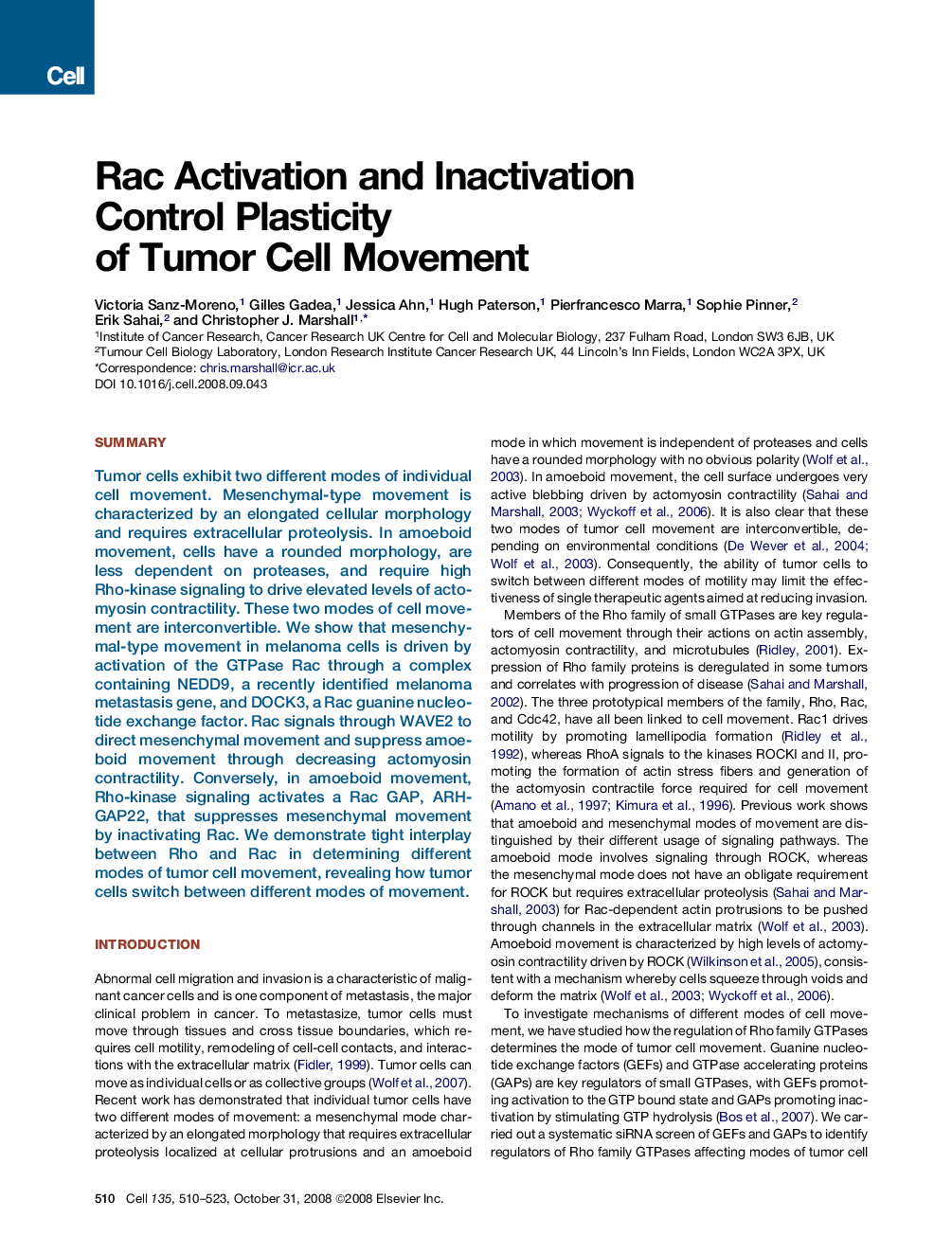| Article ID | Journal | Published Year | Pages | File Type |
|---|---|---|---|---|
| 2037171 | Cell | 2008 | 14 Pages |
SummaryTumor cells exhibit two different modes of individual cell movement. Mesenchymal-type movement is characterized by an elongated cellular morphology and requires extracellular proteolysis. In amoeboid movement, cells have a rounded morphology, are less dependent on proteases, and require high Rho-kinase signaling to drive elevated levels of actomyosin contractility. These two modes of cell movement are interconvertible. We show that mesenchymal-type movement in melanoma cells is driven by activation of the GTPase Rac through a complex containing NEDD9, a recently identified melanoma metastasis gene, and DOCK3, a Rac guanine nucleotide exchange factor. Rac signals through WAVE2 to direct mesenchymal movement and suppress amoeboid movement through decreasing actomyosin contractility. Conversely, in amoeboid movement, Rho-kinase signaling activates a Rac GAP, ARHGAP22, that suppresses mesenchymal movement by inactivating Rac. We demonstrate tight interplay between Rho and Rac in determining different modes of tumor cell movement, revealing how tumor cells switch between different modes of movement.
